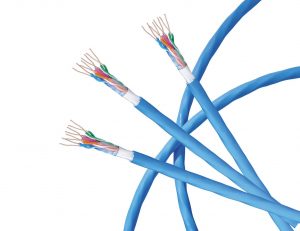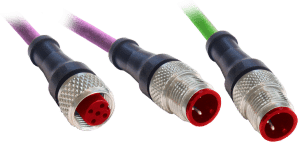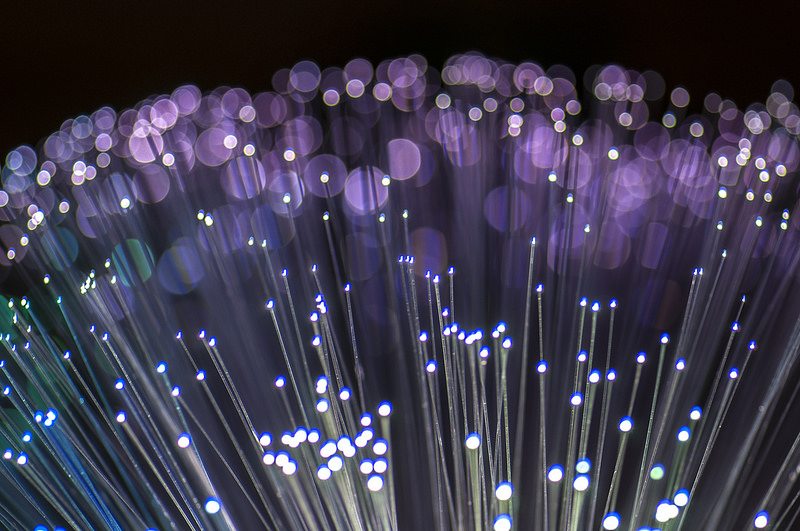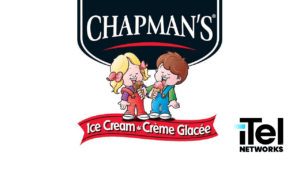Most of us know the general distinction between ADSL, COAX and Fibre internet, but the cables behind these connections may be more of a mystery. The three most common types of communication cables are Twisted Pair, Coaxial, and Fibre Optic – understanding the difference of how data travels through each cable is what ultimately affects things like speed, latency, security, cost, etc. Here is a general breakdown of the three different types of cable and what they are capable of:
Twisted Pair Internet Cables:
 Twisted pair cables are literally a pair of insulated wires that are twisted together. While this does help to reduce outside noise, these cables are still very susceptible to it. Twisted pair cables are the most cost-effective option of the three – mostly due to their lower bandwidth capacity and high attenuation. There are two types of twisted-pair cables:
Twisted pair cables are literally a pair of insulated wires that are twisted together. While this does help to reduce outside noise, these cables are still very susceptible to it. Twisted pair cables are the most cost-effective option of the three – mostly due to their lower bandwidth capacity and high attenuation. There are two types of twisted-pair cables:
Unshielded twisted pair (UTP)
- ‘Unshielded’ meaning it does not rely on physical shielding to block interference
- The most commonly used cable of the two, these are often used for both residential and business internet
- There are several UTP categories, which increase in bandwidth as you move up the scale, for example:
- CAT1 = up to 1Mbps | CAT2 = up to 4 Mbps | CAT5e = up to 1Gbps
Shielded twisted pair (STP)
- ‘Shielded’ with a foil jacket to cancel any outside interference
- Used primarily for large-scale enterprises, high-end applications, and exterior cabling that will be exposed to environmental elements.
Coaxial Internet Cables:
 Coaxial cables are high-frequency transmission cables made up of a single solid copper core that transfers data electrically over the inner conductor. Coax has 80X more transmission capacity than twisted-pair cables.
Coaxial cables are high-frequency transmission cables made up of a single solid copper core that transfers data electrically over the inner conductor. Coax has 80X more transmission capacity than twisted-pair cables.
This type of cable is commonly used to deliver TV signals (its higher bandwidth makes it more suitable for video applications) and to connect computers to a network or to the internet. Along with the stable transmission of data, coax also has anti-jamming capabilities and can effectively protect signals from being interfered with. The cost is slightly higher than twisted-pair cables, but still more economical than fibre. There are also two types of coaxial cables:
75 Ohm
- Most commonly used to transmit video signals
- Often used to connect video signals between different components like DVDs, VCRs, or receivers commonly known as A/V cables
50 Ohm
- Primarily utilized to transmit a data signal in a 2-way communication system
- Most commonly used for computer ethernet backbones, AM/FM radio receivers, GPS antenna, police scanners, and cell phone systems
Fibre Optic Internet Cables:
 Fibre is the newest form of transmission cabling technology. Instead of transferring data over copper wires, these cables contain optical fibres that transmit data via light, rather than pulses of electricity. Each individual optical fibre is coated with plastic and contained in a protective tube. This makes fibre optic cables extremely resistant to external interference. The result is a super reliable, high-speed connection with 26,000X more transmission capacity than twisted-pair cables – but also a much higher cost. Again, there are two types of fibre cables:
Fibre is the newest form of transmission cabling technology. Instead of transferring data over copper wires, these cables contain optical fibres that transmit data via light, rather than pulses of electricity. Each individual optical fibre is coated with plastic and contained in a protective tube. This makes fibre optic cables extremely resistant to external interference. The result is a super reliable, high-speed connection with 26,000X more transmission capacity than twisted-pair cables – but also a much higher cost. Again, there are two types of fibre cables:
Singlemode
- Has a small core and only allows one mode of light to propagate at a time
- Because of this, the number of light reflections decreases as they pass through the core
- The result is low attenuation and data that is able to travel further and faster
- Commonly used in telecom, CATV networks, and Universities.
Multimode
- Has a larger core diameter that lets multiple modes of light propagate
- The number of light reflections increases as they travel through the core, which allows more data through
- Because of its high dispersion, multimode cables have lower bandwidth, higher attenuation and reduced signal quality further it travels
- Most commonly used for communication over short distances such as LAN, security systems, and general fibre networks.
Fibre networks can be shared or dedicated – make sure you’re choosing the right one for your needs.
Bottom Line
Thinking back to grade school and the Goldilocks and the Three Bears analogy, all three types of internet cable offer something different. Dedicated Fibre might be too hot, but ADSL might be too cold. If you need help finding your “just right” solution, contact us – our team of experts is here to help.




